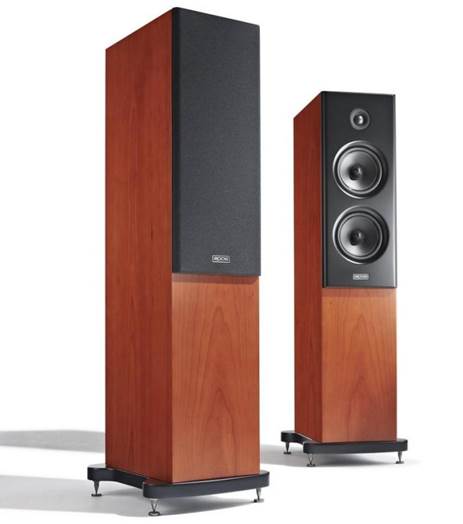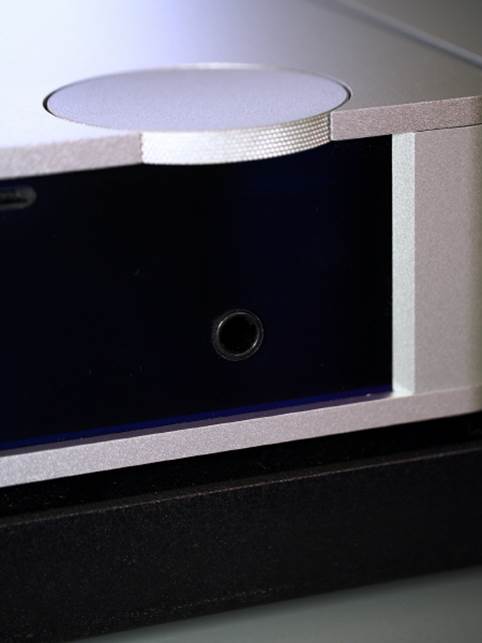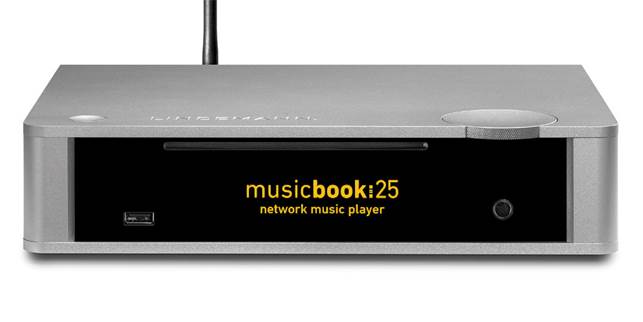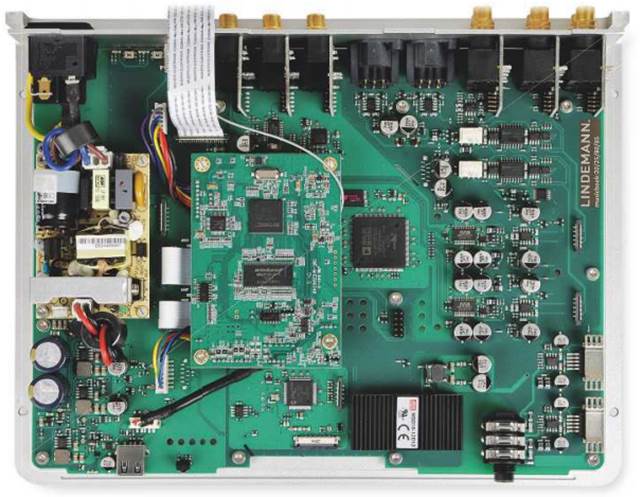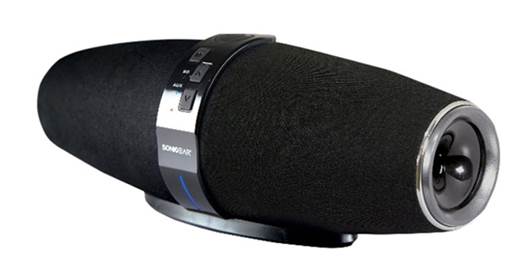Sound made by OTL amplifiers is not as neither digital or transistor ones. It is more powerful, quicker, brighter and much more than any other tube amplifier with transformers.
In spite of being famous for its alluring and warm sound performance, one of the big disadvantages of it is requiring transformers (which are hard to made and definitely cost a fortune) to accompany with load speakers. Solution of OTL (Output Transformer Less) tube amplifier – which doesn’t need transformers – is not a brand new direction, but proved its efficiency; therefore, plenty of amplifier producers applied into their business.
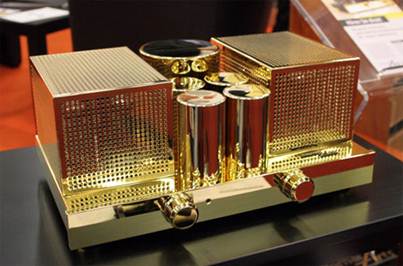
“Eternal Art”-branded OTL amplifier
Towards hard-to-pleased ears of audiophiles, electric vacuum tube is the one and only electric device accepted to become a sound amplifier. There are never-ended controversial arguments about the disadvantages of transistors or electric lights bring here and there. However, the vast majority has to accept the fact that sound made by an electric tube has its own attractive nature.
Despite its advantages about the sound performance, this kind of amplifiers had its inherent weakness – its high impedance made it impossible to directly go with common speaker parts on the market, whose impedance range from 4 to 16 ohm. Therefore, a transformer is necessary to coordinate between the high impedance of tube and low impedance of speaker. And the arising problem was the fact that it was absolutely hard to make transformers. Cheap transformers deliver low quality, well-made transformers with good materials costs a fortune. It could be said that both quality and price of tube amplifiers depend mostly on the quality of their transformers. In technical terms, in the low frequency, the inductance of the transformer made the bass not as deep as our expectation, whereas in high frequency, its capacitance among the transformer loops would loose its high notes, resulted in sound and signal distortion. Therefore, audio designers put a lot of efforts in making high-end transformers from the dawn of hi-fi technology. Essential studies and materials about the transformers as well as basic calculating methods existed from the early of 20th century. But making a good transformer meant extremely high price. If a tube amplifier couldn’t be better with a transformer, why hadn’t we left the transformer out in order to have an efficient and excellent amplifier? As a consequence, in the past 50 years, audiophiles have been on the way of searching the answers for these questions: How can we design an OTL (Output Transformer Less – no need the transformer) amplifier more powerful, with bigger capacity?
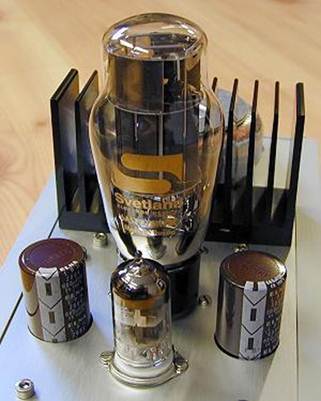
A headamp (amplifier for headphone) OTL which uses 6AS7G tubes
The biggest and toughest problem in making an OTL amplifier is the resistance. The electric tubes are originally design to work based on the low current and high voltage while modern speakers require high current with fairly low voltage. The vast majority of popular capacity tubes such as EL-34, KT-88, 6550… all has resistance much higher from hundred to thousand times than that of the speakers. The first commercial OTL amplifier all over the world was of Stephens’s, but it was originally designed with the purpose of amplifying the sound of its own 500 ohm speaker. However, it was definitely not its most successful product. But thanks to its OTL amplifier of Stephens, people knew basically about the problems in designing an OTL circuit: How to combine a load which has low resistance with a high-resistant vacuum tube without using a resistor transformer?
The existence of high capacity 6AS7G triode tube (voltage regulator tube for US military equipments) in 1946, the mission of making the OTL amplifier seemed to be possible. The anode resistant of a 6AS7 tube was 280 ohm. If we had 2 tubes in parallel, it would be around 140 ohm. If we had enough tubes in parallel, it wouldn’t be too difficult for us to load a speaker, in the past years, whose resistance was 16 ohm.
Follow the results of Stephens, in 1970’s, some manufacturers produced phono players with big-sized radios. In these devices, they equipped specially-looped piezoelectric speakers whose resistance went up to 400-600 ohm. With that high resistance, it was possible to connect directly to the tube without the need of transformers and sound made by this player was quite impressive; however, this was a half measure, because the speaker of this device was fixed inside and there were no changes of connect more external speakers. On the other hand, the capacity of this player was quite small, maximum up to approximately 5-7 Watt.
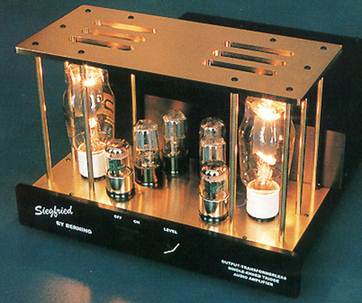
An OTL amplifier with 12B4 tubes
The good output capacity tube in the beginning years were low-impedance tubes in voltage regulator circuit, such as these high capacity double tubes: 6AS7G, 6080, 6082, 6336/A/B, 7236 and 7241. All were indirect triode tubes.
Juliius Futteman, the first American engineer who had deep studies about designing OTL amplifiers started to use a circuit of 8 12B4 tubes (a triode tube whose size was smaller than above mentioned tubes). After making a success with 12B4 design, he tested with output pentodes, because the pentodes have higher capacity and it was easier in designing its driver stage. Nevertheless, OTL amplifiers using pentodes required more tubes and had more sound distortion in comparison with triodes.
In the “Cold War” time, audiophiles had the habits of making their own amplifiers. The OTL amplifier design engineer just knew about the US military tubes mentioned above and people came into a conclusion that 6336A tubes were the best capacity triode in making OTL. This was commonly used in do-it-yourself OTL circuits, especially in France and Japan. In an article on Journal of Audio Engineering Society, the 6336A tube was the apple of Futteman’s eye. Because he realized its high grid emission and low amplification coefficient of 6AS7G tubes were its weaknesses. Meanwhile, 6336A tubes had higher amplification coefficient and anode resistance was less than 100 ohm (with 2 tubes in parallel) which performed well and suitable with his designs.
In many years, in fact, 6336A tubes just stood behind Sylvania’s 7241 tubes with extremely low anode resistance (7241 was a triple-triode in low plate resistance). With 3 parts in parallel, the anode resistance of 7241 was only 67 ohm and the anode current went up to 550mA. However, this tube was quite rare as well as expensive; as a consequence, 7241 was never commonly used outside the US’s borders. Due to the fact that it was a special tube, the production was also limited in the US resulting in its hard-to-find state.
When the “Cold War” was over, Western engineers and audiophiles knew about the existence of a “treasure” of Soviet military, it was legendary 6C33C tube. In fact, 6C33C was still a high capacity double triode with weird design, extremely solid in terms of mechanism in thick glass with mm-thick anode steel. During the years that 6C33C was still in mystery, the USSR restrained itself from producing EC33C tubes. Though produced in the USSR, it was mainly supplied to the Japanese market. This tube was regarded as the first prototype of the well-known Sovtek 6C33C-B tube at that time. 6C33C tubes had plenty of suitable characteristics for making OTL amplifiers like low voltage. For instant, in 145V, the current went through the tube could be up to 400mA, anode resistant was 100 ohm and the amplification coefficient was 2.7. 6C33C tubes bore many resemblances with the 6336A, but it was absolutely cheaper. Therefore, since its inception, 6C33C quickly became the first choice for OTL amplifier design all over the world.
In electric current, anode resistance was a dynamic parameter, which meant tubes in low current – high voltage then the resistance increased and vice versa. Therefore, it could be suitable with 8 ohm-resistance speaker, in most of OTL designs using 6C33C in particular and other tubes in general, they had to make tubes in parallel in order to decrease the output resistance with low-voltage and high anode current.
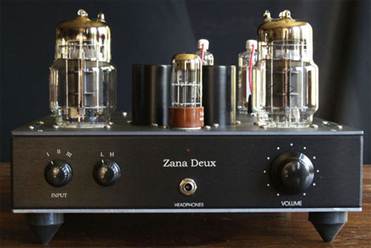
An OTL amplifier with 6C33C tubes
Until now, there are two kinds of tubes that manufacturers and DIY (do-it-yourself) users use to make OTL amplifiers, they are 6AS7 (or 6H13C of Russia) and 6C33C, because they are common, easy to replace and cheap.
Several well-known manufacturers in OTL amplifier designs such as Atmasphere, Joule Electra, Transcendent (US), Tenor Audio (Canada)… have great OTL products, taking part in international hi-end exhibitions. Sound quality of OTL amplifiers is not as electric and transistor. It is powerful, quick, bright, lifelike than most of normal tube amplifier with transformers, its bass is sharp and have the potential in capacity and shape. The center sound is definitely clear, but not as sweet in such a soft way like amplifiers with transformers. The frequency range is so wide, precise and attentive to details. Thanks to its lack of transformers, many OTL amplifiers have their frequency range up to hundreds kHz.
Read more at http://programming.wmlcloud.com/multimedia/6562.aspx#tVTwHKMK6b5bZ0b2.99
